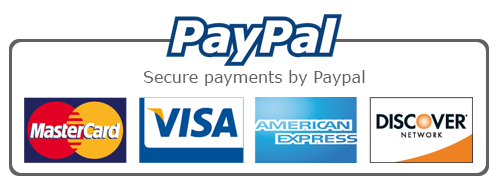Why does your Xtreme HD IPTV keep freezing during your favorite shows? This question might be on your mind. IPTV services like Xtreme HD are great for on-demand TV but can be plagued by lagging and buffering.
Slow internet, server overload, or outdated hardware are common culprits. For example, standard quality streams require at least 5 Mbps for smooth viewing. But issues like slow loading times can disrupt your experience.
Here are some key takeaways to fix Xtreme HD IPTV lagging:
- Check your internet speed using tools like Speedtest.net. Xtreme HD needs at least 5 Mbps for smooth viewing.
- Use a wired Ethernet cable instead of Wi-Fi for a stable connection.
- Contact Xtreme HD support to check server status or request swaps.
- Restart devices and clear app cache to refresh streaming apps.
- Consider using a VPN like ExpressVPN to prevent ISP throttling during peak hours.
Understanding IPTV Lag: Causes and Effects
Streaming interruptions can ruin the fun of watching Xtreme HD IPTV’s 20,000 live channels. To fix HD IPTV lag, first understand how data moves during streaming. IPTV lag happens when video streams don’t load smoothly, causing pauses, buffering, or pixelation.
This delay comes from problems in the data transfer between servers and your device.
What Is IPTV Lag?
IPTV lag is caused by slow data transmission. When streaming, content goes into a buffer—a temporary storage area—before playing. If buffering slows, video frames drop, causing visible interruptions.
Xtreme HD IPTV uses anti-freezing tech to reduce these issues. But, internet speed or network congestion can still cause problems.
Common Causes of Lag
Slow internet speeds, like less than 5 Mbps for HD or 25 Mbps for 4K, are big problems. Network congestion from many devices using bandwidth-heavy apps, like gaming or video calls, also strains connections. Server overload, mainly during peak hours, can disrupt streaming.
Old routers or software conflicts can also cause Xtreme IPTV streaming issues.
How Lag Affects Viewing Experience
Even small lag can ruin live sports or movies, making seamless content fragmented. Frequent buffering makes viewers wait a lot, while severe cases freeze screens. Xtreme’s 99.9% uptime and 24/7 support try to fix these issues.
But, users must tackle network problems to ensure smooth streaming.
Network Requirements for Xtreme HD IPTV
A stable network is key to avoid buffering and ensure smooth HD streaming. The right bandwidth, router settings, and connection type are crucial. By addressing these, you can reduce lag and improve your streaming experience.
Minimum Bandwidth Recommendations
Streaming HD content needs specific speeds. Standard definition requires 2-4 Mbps, while 720p HD needs at least 5-10 Mbps. MeloTV and ReloTV suggest 20 Mbps for 1080p and 30 Mbps for 4K. If your bandwidth is too low, you’ll experience buffering.
Recommended Router Settings
To optimize routers, enable QoS to prioritize IPTV traffic. Use the 5GHz Wi-Fi band for less interference. Also, update your firmware regularly. PlayIPTVOnline recommends these steps to boost IPTV performance. Adjusting these settings can help avoid delays from network congestion.
Importance of Wired versus Wireless Connections
Ethernet cables offer stable connections, reducing lag compared to Wi-Fi. Wireless signals can be affected by interference from devices or walls, leading to speed issues. For 4K or 1080p streams, wired setups are more reliable. Use Wi-Fi only when wired options are not available.
Troubleshooting Steps for Fixing Lag
Regular maintenance and proactive checks solve most Xtreme HD IPTV issues. These steps tackle both hardware and network problems to fix lag and buffering. By following these IPTV buffering tips, you can enjoy smooth streaming without tech troubles.
Restarting Your Device
Restarting devices and networking gear fixes temporary software issues. Unplug your Xtreme HD box and router for 30 seconds. This resets connections. Also, clear the IPTV app’s cache and update its software to keep up with streaming standards.
This Xtreme IPTV lag fix tackles many small problems. It helps when settings are outdated or memory is full.
Checking Internet Speed
Make sure your internet speed is good enough: 5Mbps for SD, 10Mbps for 720p, 20Mbps for 1080p, and 30Mbps for 4K. Use tools like Speedtest.net to check your speed. Always choose wired Ethernet over Wi-Fi for better stability.
These IPTV buffering tips help ensure your internet can handle your streaming needs.
Using a VPN for IPTV Services
ISP throttling can slow down streams. A Xtreme IPTV lag fix is using a VPN like ExpressVPN. It hides your data to avoid throttling and reduce buffering.
If problems still happen, reach out to providers like MeloTV or ReloTV. Ask them to move you to less busy servers. Make sure QoS settings give IPTV priority during busy times.
Optimizing Your Home Network for IPTV
Make your Xtreme HD IPTV better by improving your network. Move your router to the best spot, cut down on interference, and set up QoS. These steps help a lot with fix lag on Xtreme HD IPTV. Since one stream needs 8 Mbps, every little change helps.
positioning your router for best signal>
Put your router in the middle to avoid signal blocks from walls or metal. Raise it off the floor to cover more area. This setup keeps your devices connected well, cutting down on streaming problems.
reducing interference from other devices>
Things like microwaves, cordless phones, and Bluetooth can mess with your Wi-Fi. Keep them far from your router. Use the 5GHz band to avoid problems with 2.4GHz. Turn off devices you don’t use to make room for IPTV. This improve IPTV performance by giving it more space.
quality of service settings>
Go into your router’s settings to turn on QoS. Make sure IPTV gets the most bandwidth by setting your device’s IP address first. This stops other apps from slowing down your stream. Users of MeloTV and ReloTV say they see less buffering after doing this.
Choosing Reliable IPTV Providers
Reducing Xtreme HD IPTV lagging and IPTV buffering issues starts with the provider’s setup. Good servers and CDNs help content reach devices fast. Providers who keep their servers up and offer great support make streaming smooth.
Overview of Top IPTV Services
Top IPTV services like MeloTV and ReloTV have servers all over to cut down on delays. They offer high-definition streams without losing stability. But, cheaper services under $15 might use shared servers, leading to more IPTV buffering issues.
Premium services in the $15–$25 range offer a good mix. They have dedicated servers and 24/7 tech help, making them reliable.
Key Advantages of MeloTV and ReloTV
MeloTV has servers in the US for better service in North America. ReloTV uses fiber-optic networks for fast HD streams. Both offer quick tech support to fix Xtreme HD IPTV lagging fast.
They also have a 3-day refund policy. This lets users try before they buy.
Comparing Additional Providers
PlayIPTVOnline and IPTVSubscriptionShop are good for streaming across the Atlantic. KapTV and MGUtv serve Asian content from Japan and Singapore. TVonFly handles 4K streams well with its CDN.
Services with clear pricing and 24/7 chat support fix IPTV buffering issues quickly. Always check server uptime and user reviews before signing up.
Upgrading Your Equipment for Better Performance
HD streaming lagging solutions often involve hardware upgrades. This is to eliminate buffering and pixelation. Outdated devices or weak connections may need to be replaced to fix HD IPTV lag.
Modern equipment ensures stable video delivery. This reduces interruptions during streaming.
When to Consider a New Router
Routers older than two years may not support modern IPTV protocols. Models from brands like Netgear or ASUS work better with HD video. They have dual-band Wi-Fi and MU-MIMO technology.
Persistent buffering or weak signal strength in multiple rooms means it’s time for an upgrade. Providers like MeloTV suggest routers with gigabit Ethernet ports for high-bandwidth streaming.
Benefits of an Ethernet Connection
A wired Ethernet connection reduces latency and interference compared to Wi-Fi. The Amazon Ethernet Adapter (Cat6 or Cat7) ensures stable 1 Gbps speeds. This is perfect for 4K streams.
Wired setups eliminate signal degradation. They are essential for troubleshooting HD IPTV lag in large homes or multi-device environments.
Streaming Devices that Improve Speed
Dedicated IPTV devices like the Roku Streaming Stick 4K or Android TV boxes optimize video processing. High-end models from brands like ReloTV or PlayIPTVOnline have quad-core processors and 2GB RAM. This reduces lag during 1080p+ streams.
Pairing these devices with QoS-enabled routers further enhances performance. This ensures smooth playback without pixelation.
Long-Term Solutions to Avoid IPTV Lag
Keeping your streaming smooth needs more than just quick fixes. To fix Xtreme IPTV streaming problems, you must keep working on it. This ensures your service stays reliable and fast over time.
Regularly Testing Your Internet Connection
Test your internet speed every week to make sure it’s good for HD streaming. Watch out for changes during busy times or when other devices are using it. Ethernet is usually better than Wi-Fi, and tools like NordVPN can spot ISP slowdowns.
The Xtreme HD IPTV.ORG tech works best with speeds over 5 Mbps.
Maintaining Updated Software and Firmware
Make sure your streaming devices and router are always up to date. Close apps you’re not using and clean up app caches every week. If your devices get too hot, make sure they have good airflow.
Resetting your devices to factory settings can fix big problems. Lowering video quality can also help during busy times.
Staying Informed on Provider Performance
Keep an eye on how well your provider is doing through MeloTV, ReloTV, and PlayIPTVOnline. Their servers are all over the world, which means less buffering. Try their services for 36 hours to see if they’re stable before you pay.
Check out forums for news from IPTVSubscriptionShop and KapTV. This way, you’ll know when they’re doing maintenance that might affect your service.




